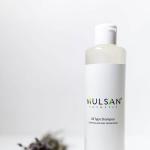How lavsan burns. Determining the type of fabric fibers by external signs
Hi all. I very often heard questions of the following kind: is this calico made of natural cotton Or is this cotton fabric natural? Of course, these questions do not arise out of nowhere, especially in our difficult times, where on every corner they offer a fake at the price of a natural product. After such questions, I felt the desire to write an article, thanks to which attackers will have much less chance of deceiving you.
1.
2.
3.
4.
A little about cotton and cotton fabrics.
Cotton is an environmentally friendly product.
Cotton, and, as a result, natural cotton fabric themselves are a natural and environmentally friendly product. Such famous types of fabrics as calico are made from cotton, and at the same time, they may differ in price. It's all about the varying complexity of production. The cost can vary from 1000 rubles to 10,000 thousand or more. Agree, I would not want to buy satin for 5-6 thousand rubles, which is made from synthetics and is not worth even a fifth of this money. That is why we read on and gain useful knowledge. By the way, I would like to point out that cotton and cotton fabric are the same thing.
9 ways to identify a natural cotton product from a synthetic counterfeit.
Now let's talk directly about how to distinguish synthetics from high-quality cotton. There are various methods, some are quite easy to use, we will analyze them first, some are more difficult.Regardless of the method, I advise you to first look at the product tag. According to all rules and laws, the manufacturer is obliged to write the truth on the product label. However, if you have any doubts about the authenticity of the product, we proceed to check.

Easy ways to spot a fake “without leaving the cash register”:
- 1st method: definition product weight . Any cotton product is quite heavy. Everything here is hidden in cotton fibers; they are much heavier than synthetic ones. If you take a set of bed linen, the same density, then underwear made from natural cotton will be much heavier than synthetics. Pay close attention to this, the usual weight of a set of cotton bed linen ranges from 1.9 – 2.5 kg, while a set of synthetics weighs 0.5 – 1 kg.
- 2nd method: electrification. Electrification is the property of a material to accumulate a static charge. Simply put, if you rub synthetic fabric, it will crackle and glow in the dark. Cotton fabric will never behave like this; from the point of view of electrification, it is neutral.
- 3rd method: definition by touch. Cotton fabrics are very soft to the touch and quickly take on body temperature, i.e. become warm. In turn, synthetic fabrics always remain cold.
- 4th method: shine. Cotton fabrics are naturally non-shiny. This property is inherent in synthetic fabrics. However, there is an exception in the form of satin; for this fabric this advice will not be relevant. Due to its weaving and twisting of the threads, there is still a slight shine on it, however, other types of fabrics are calico, poplin, etc. do not shine and you can safely use this method.
- 5th method: creasing. Crumple a piece of fabric; if it turns out to be cotton, it will crumple quite badly; synthetic fabric practically does not wrinkle and regains its shape very quickly.
- 6th method: price. The cost indicator can give an excellent hint when choosing a quality cotton product. If you see a set of cotton satin bed linen in a store for 600 - 800 rubles, you should know that it is a fake. High-quality satin bed linen cannot cost that much. The right decision will compare the price in two or three different stores and formulate for yourself the average price for a certain type of fabric. After this, take into account the average cost, and do not chase for “super”cheap price. Remember, the miser pays twice!
The beauty of the methods listed above is that they allow you to identify a fake at the purchase stage. Remember them and don't forget to apply them.Now let's talk about more complex methods. They themselves are of course not complicated, but at the purchasing stage you most likely won’t be able to use them.
- 7th method: combustion. Cotton fabrics, when burned, emit the smell of burnt paper, and after burning they leave ash. Synthetic fabrics, in turn, do not burn, but smolder and leave their own specific smell.
- 8th method: pellets. Cotton fabric never forms unpleasant pills during use, which cannot be said about synthetics. Look at your old cotton clothes and you will see this. By the way, you can try to apply this method at the purchasing stage; even new synthetic fabric forms a few pills if you stroke it a little and look closely.
- 9th method: drying after washing. Natural bed linen cotton fabric After washing it dries much longer than any synthetic material.
Two latest methods are 100% in determining the naturalness of the product, but, most likely, not a single seller will allow you to use them at the purchase stage. And as a rule, you can use them after purchase.
Let's summarize.
This is where I will end my article. Be more careful when choosing bedding or cotton fabrics. Use all the voiced methods, choose the best. If you have extensive experience in identifying natural cotton fabric, I and all readers will be glad to hear them. Leave your tips in the comments. Don't forget to repost.Sincerely, Victoria Morozova.
10.03.2017
The composition determines all the properties of the material, and therefore of future clothing. Typically, manufacturers indicate the type and percentage of fibers. But it won’t hurt to know how you can determine the structure of the fabric yourself. After all, it is not always possible to familiarize yourself with the markings, and cases of distortion of information about the material are not excluded.
What determines the composition of a fabric?
Proper determination of fabric composition plays an important role in choosing fabric for sewing. It depends on:
- purpose of the fabric
- cost of material,
- sewing technology,
- choice of style,
- features of care of the finished product.
For clothes intended for summer and winter seasons, daily wearing and holiday occasions are selected different kinds fabrics. Items in contact with skin must contain a large number of natural fibers, provide a pleasant feeling, comfortable conditions for ventilation. Outerwear protects against cold - in this case, the thermal insulation and waterproof properties of the material are important. For everyday products, practicality and wear resistance, etc. are important. Knowing the composition of textiles, you can accurately determine its purpose and choose the optimal style.
All fabrics have certain requirements for sewing technology. The specifics of the cut, the choice of needles, threads, and seams depend on the content of different types of fibers. Accurate information allows you to ensure ease of use and high quality results.
Tactile determination of fabric composition
Information about the composition is placed on the labels. Manufacturers, indicating this data, arrange the types of fibers based on their content in the material, from higher to lower values. For example, this one is 60% wool, 30% cotton and 10% polyester. However, if it is impossible to get acquainted with such information, you can try to determine the type of fabric using tactile sensations:
- silk has tenderness, softness, the hand glides over the surface;
- cotton gives a feeling of warmth, is pleasant to the touch, soft, wrinkles easily;
- linen is much stiffer and creates a feeling of coolness;
- the wool gives a slight tingling sensation, warmth, and practically does not wrinkle;
- viscose has a pleasant shine, is soft, delicate, and wrinkles to the touch;
- Nylon, polyester, nylon have a slippery surface, and the material crumbles when cut.
Determination of composition by combustion
The range of fabrics is huge. It is difficult to accurately determine the composition by tactile sensations, and especially to identify the presence synthetic fibers in mixed versions. The nature of the tissue combustion and the odor emanating from it will help in studying the composition. To determine the type of fiber, you need to pull the thread out of the fabric and set it on fire:
- cotton and linen fibers burn intensely, the flame has a yellowish color, can sparkle, after combustion there remains ash without lumps, which smells like burnt paper;
- the burning of wool and silk is less intense, a ball of dark color remains, when touched it crumbles, the smell of burnt hair is felt;
- the burning of viscose is similar to that observed when burning cotton, but this material burns out much faster;
- When acetate and triacetate fibers burn, a vinegar smell appears, flames yellow color, the resulting lump can be easily crushed with your fingers;
- the lavsan (or polyester) thread burns slowly, soot appears, and a hard ball remains;
- when nylon fibers are set on fire, the smell of sealing wax is felt, white smoke is visible, and a hard dark lump remains;
- polyvinyl chloride thread does not burn, it chars, emitting a chlorine odor;
- Nitron fiber burns in flashes, black soot is released, and a lump remains that can be crushed with your fingers.
Materials can be made from mixed fibers. When burning such filaments, the type of flame and odors depend on the predominant component. It should be taken into account that after burning natural fibers, only ash remains. If there are hard lumps in it, then the fabric contains synthetic impurities.
In order to become more familiar with the behavior of fabrics of different compositions during combustion, we created the section #burn on our YouTube channel. Join us and enjoy watching!)
The chemical industry produces large quantities of chemical fibers used to make clothing and other goods. When degreasing with chlorinated hydrocarbons, some of the fibers may be completely or partially dissolved, such as fibers obtained from vinyl chloride. Some types of products undergo such shrinkage during the degreasing process that they completely lose consumer properties: for example, a size 48 jersey becomes a size 30. Products made from silk acetate may be destroyed during the process by the use of acetone, acetic acid and other reagents. All this made it necessary to recognize fibrous composition products.
Fibers can be recognized by the nature of their combustion, by their solubility in various solvents, by their dyeability, as well as by their melting point, fluorescence and luminescence.
When examining fibers using a microscope, they are examined both in the longitudinal and transverse directions (transverse sections), comparing those studied with standards.
Despite the fact that there are many fiber recognition methods, most of them are unsuitable for work in factories, as they require a significant investment of time, large samples of the materials being studied, or the use of special equipment.
Express fiber recognition methods applicable to collection points and dry cleaning factories
Recognition of fabric fibers by combustion pattern
The method of recognizing fibers by burning them is the simplest. Using it, you can identify a whole range of fibers quite accurately. When burning fibers in the flame of an alcohol lamp or burner, they take into account the nature of combustion (quiet flame or combustion accompanied by melting), the type of flame (smoking or not), the smell, the type of residue after combustion, and then make a conclusion about whether the fibers belong to one class or another.
|
Sunbathing |
Character |
Behavior outside the flame |
Smell when burning |
Character |
|
|
Cotton, viscose fiber |
Burn quickly without soot or melting |
Gray ash |
|||
|
Natural silk, wool |
Burn moderately without soot or melting |
Fragile black ball |
|||
|
Acetate |
Burns moderately, without soot, melts |
Vinegar |
Dark brown ball |
||
|
Nylon, nylon |
Burn moderately without soot, melt |
Hard, dark, shiny ball |
|||
|
Burns quickly with soot and melting |
|||||
|
doesn't melt |
Dark, matte, loose ball |
||||
|
Polypropylene |
Burns quickly, without soot, melts |
Non-fragile black ball |
|||
|
with soot and melting |
Fragile black ball |
Recognition of fabric fibers by solubility
Fibers can also be recognized by their solubility in different solvents.
|
Processing sequence |
Solvent |
||
|
dissolve |
Do not dissolve |
||
|
Doorman's Reagent |
Viscose, copper-ammonia |
Acetate, polyester, polyamide, polyvinyl chloride, polyacrylonitrile |
|
|
Acetic acid, glacial, cold |
Acetate |
Polyester, polyamide, polyvinyl chloride, polyacrylonitrile |
|
|
Hydrochloric acid cold |
Nylon, anide (when the solution is diluted with water, a precipitate forms) |
Polyamide (undecane), polyester, polyvinyl chloride, polyacrylonitrile |
|
|
Nitric acid, concentrated cold |
Polyacrylonitrile (nitron) |
Polyamide (undecane), polyester, polyvinyl chloride |
|
|
Concentrated cold sulfuric acid |
Polyamide (undecane), polyester (lavsan) |
Polyvinyl chloride (chlorine) |
|
Recognition of fabric fibers by dyeability
For undyed fibers, it is possible to recognize fibers by their dyeability in a dye mixture. The mixture is prepared by dissolving the following dyes in 1 liter of water, g:
Chloramine orange 1.0
Chloramine yellow 2.0
Diamond blue FFR extra 1.0
Eosin extra 1.0
Cellitone pink R 0.5
Dispersant 1.0
Celliton pink R is dissolved in water at 50-60° C. The remaining dyes are dissolved at boiling. The fiber sample to be analyzed is placed in a boiling dye solution for 3 minutes. Samples are then selected, washed with cold water and boiled in a bath containing 1 g/L dispersant for 1 min. As a result of dyeing, the fibers obtain the following color:
|
Natural silk |
|
|
Woolen |
Dark purple |
|
Cotton |
Gray-yellow |
|
Casein |
Red-violet |
|
Mercerized cotton |
Bright yellow |
|
Copper-ammonia |
Orange-brown |
|
Acetate |
|
|
Polyamide |
|
|
Polyvinyl chloride |
Colorless |
There are also methods from NITHIB and MIT.
It is usually not difficult to distinguish synthetic fabric from natural fabric in a store. Just read the composition of the material on the price tag, or ask the seller. Besides, natural fabrics often much more expensive than synthetics. However, there are quite a lot of situations where the composition of the tissue is unknown. How can you find out what the fabric is made of? Read under the cut.
Serious doubts regarding the composition of the fabric may arise if you buy a piece secondhand, or if you discover large deposits of fabric of unknown origin at home. :) Sometimes I doubt the composition of the fabric even in the store. For example, if the cotton feels too silky or stretchy. Or if it doesn't wrinkle at all.
But why so scrupulously find out the true composition of the material? Firstly, to understand the fabric you have chosen. And secondly, . I am one of them. I feel hot in synthetics, but the worst thing is allergic reactions. Of course, there must be an integrated approach, and nutrition, as well as cosmetics, should also be as natural as possible. But clothing can be a big factor in combating unpleasant skin reactions.
In my opinion, with experience, many fabrics can be identified by touch. For example, natural wool has a very recognizable smell and is easy to recognize by touch. But, of course, you can always run into a very well-made synthetic fabric. How to determine the composition of the fabric? For this we need... Matches or a lighter. Yes, yes, we will check the composition of the fabric this old-fashioned way.
For my experiment I selected:
Viscose lining fabric.
Unnamed fabric, synthetic in my opinion.
Unnamed chiffon, similar to synthetics.
Let's start the experiment. General rule for all natural fabrics: the ashes should be ground into powder. The ashes of mixed fabrics cannot be ground into powder; lumps will still remain between your fingers.
How should wool behave?
The wool curls into a ball and emits the smell of burnt lint.
Result: I admit that wool was the most difficult for me. Since almost all wool was added, this slightly changed the reaction of the fabric to ignition. And, as you can see, the ashes were not ground into powder.
Cotton should burn like paper.
Result: a piece of fabric caught fire like paper, the ashes were perfectly ground into powder. Confirming the composition of the cotton was very simple.
The burning silk should “jump” above the match and not emit any odor.






